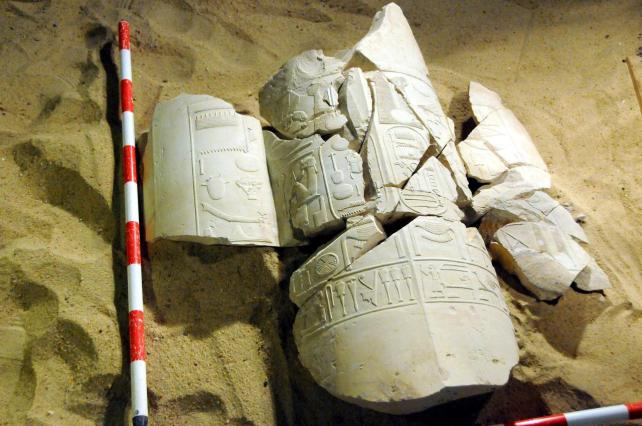Photo of remains of columns in a mausoleum of Ancient Egypt with inscriptions in hieroglyphics, found in the southern Egyptian province of Luxor. EFE
Cairo, Feb 7 (EFE).- A team of Spanish and Egyptian archaeologists made a find in a southern Egyptian tomb that opens the way to a reinterpretation of Pharaonic chronology, since it could show that Amenhotep III and his son Amenhotep IV reigned together.
The team, headed by Spaniard Francisco Martin Valentin and funded by Spain's Gaselec foundation, excavated the remains of a wall and columns of the mausoleum of a minister of the 18th Pharaonic dynasty - 1569-1315 B.C. - in the province of Luxor.
What is exceptional about the discovery, Martin Valentin told Efe, is that in the excavation they found the names of Amenhotep III and Amenhotep IV carved together.
This "could confirm that the two Pharaohs governed jointly between nine and 10 years of the 39 that Amenhotep III governed, since the hieroglypics on the columns explain that they were both sovereigns of Upper and Lower Egypt," the archaeologist said.
"There is nothing similar in Pharaonic history," Martin Valentin said decisively.
The reigns of Amenhotep III, also known by the Hellenized name of Amenophis III, and of Amenhotep IV, who went down in history as Akhenaten, are among the most significant in Ancient Egypt for a number of reasons.
The father governed a country that witnessed one of its greatest periods of prosperity and internal stability under his long, almost 40-year reign.
Until now, experts thought the son had rebelled against his father's way of ruling and that, after succeeding him on the throne when he died, acquired the name of Akhenaten and established monotheism for the first time, with Aten as the supreme deity.
But this new discovery, Martin Valentin said, could indicate that father and son were together in this revolutionary movement, since they shared the throne for some 10 years.
"Since the year 2009 we have worked in this place where we have excavated about 400 sq. meters (4,300 sq. feet), and we expect new finds in the remaining 600 sq. meters (2,000 sq. feet)," the archaeologist said.



